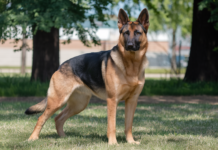Last Updated on December 10, 2023 by Dogs Vets
Chest Bone Deformities in Dogs
When it comes to our canine companions, their health and well-being are often at the forefront of our minds. As a dedicated dog owner, you may have come across various health concerns, but one less commonly discussed topic is chest bone deformities in dogs.
This condition, though not frequently talked about, can significantly impact a dog’s quality of life. Understanding this condition, its causes, symptoms, and treatment options is crucial for any dog owner.
In this comprehensive guide, we will delve into the nuances of chest bone deformities in dogs, offering expert insights and answering your most pressing questions.
Understanding Chest Bone Deformities in Dogs
What are Chest Bone Deformities?
Chest bone deformities in dogs refer to abnormalities in the shape or structure of the chest cavity. These can range from mild cosmetic issues to severe conditions affecting the dog’s respiratory and cardiac functions.
Types of Chest Bone Deformities
- Pectus Excavatum: Commonly known as a sunken or funnel chest, this condition is characterized by a concave shape of the chest.
- Pectus Carinatum: Also known as a pigeon chest, this involves a protrusion of the sternum or breastbone.
- Other Variations: Less common deformities include asymmetrical chest shapes or abnormal rib development.
Causes and Risk Factors
Genetic Predisposition
Certain breeds, like Bulldogs, Pugs, and Boston Terriers, are more prone to chest bone deformities due to their genetic makeup.
Environmental Factors
Inadequate nutrition or injuries during the critical growth phase can lead to the development of these deformities.
Symptoms and Diagnosis
Recognizing the Signs
Early signs include difficulty breathing, reduced exercise tolerance, and visible chest abnormalities. As the dog matures, symptoms might worsen.
Diagnostic Methods
Veterinarians typically use X-rays, CT scans, and physical examinations to diagnose chest bone deformities in dogs.
Treatment Options
Non-Surgical Approaches
Mild cases might be manageable with physical therapy, special exercises, and nutritional support.
Surgical Interventions
In severe cases, surgery may be necessary to correct the deformity and alleviate associated health issues.
Post-Treatment Care
Recovery and Rehabilitation
Post-surgery, dogs require careful monitoring, pain management, and a gradual return to physical activities.
Long-Term Management
Regular check-ups and adapting the dog’s lifestyle to its condition are crucial for maintaining good health.
Preventive Measures
Breeding Responsibility
Responsible breeding practices can reduce the incidence of genetic-related chest bone deformities in dogs.
Early Detection
Regular veterinary check-ups can help in early detection and management of these conditions.
Common Misconceptions
Severity and Impact
Not all chest bone deformities are life-threatening, but they should never be ignored as they can lead to significant health complications.
Treatment Necessity
While not all cases require surgical intervention, professional veterinary assessment is essential to determine the best course of action.
Conclusion
Chest bone deformities in dogs, while not extremely common, are significant health concerns that require attention and understanding. As responsible dog owners, being informed and vigilant about these conditions is crucial.
Regular veterinary visits, awareness of symptoms, and understanding treatment options can greatly improve the life quality of dogs affected by these deformities.
FAQs
Can chest bone deformities in dogs be completely cured?
While some cases can be corrected surgically, others may require ongoing management. The prognosis varies based on the severity and type of deformity.
Are certain dog breeds more prone to these deformities?
Yes, brachycephalic breeds like Bulldogs and Pugs are more susceptible due to their genetic makeup.
Is surgery the only treatment option for chest bone deformities in dogs?
No, treatment varies based on the severity. Mild cases may be managed without surgery.
How can I tell if my dog has a chest bone deformity?
Look for symptoms like difficulty breathing, reduced exercise tolerance, and visible chest abnormalities. A veterinary check-up is recommended for a definitive diagnosis.
What is the recovery time after surgery for a chest bone deformity?
Recovery time varies but generally ranges from a few weeks to several months, depending on the complexity of the surgery and the dog’s overall health.
Can chest bone deformities in dogs lead to other health problems?
Yes, they can lead to respiratory and cardiac issues if left untreated.
Are there any specific exercises or therapies beneficial for dogs with chest bone deformities?
Yes, physical therapy and specific exercises can help strengthen the chest muscles and improve respiratory function. However, these should be done under professional guidance.
Fact Check
We strive to provide the latest valuable information for pet lovers with accuracy and fairness. If you would like to add to this post or advertise with us, don’t hesitate to reach us. If you see something that doesn’t look right, contact us!
Verified Sources: American Veterinary Medical Association https://www.avma.com

















